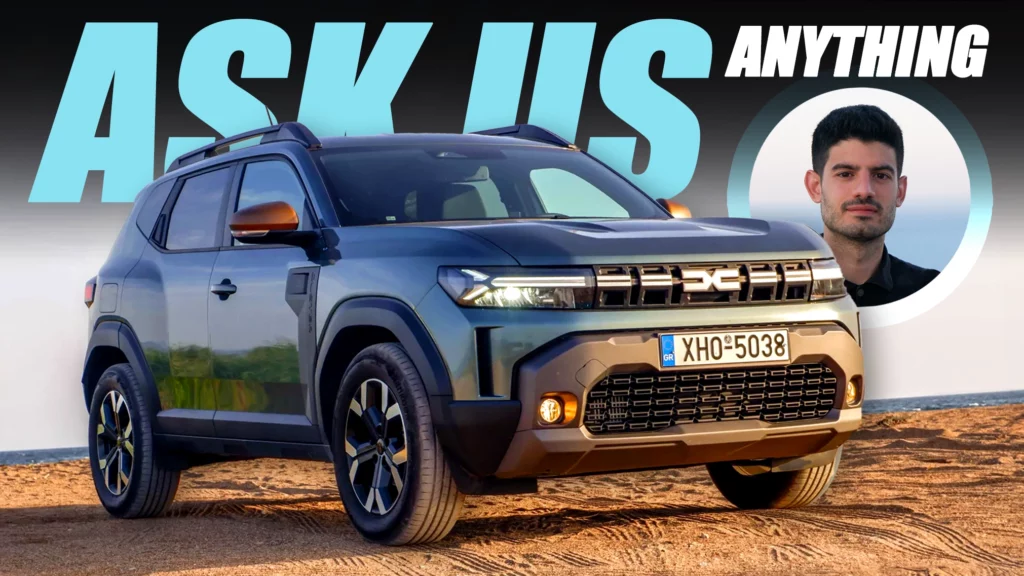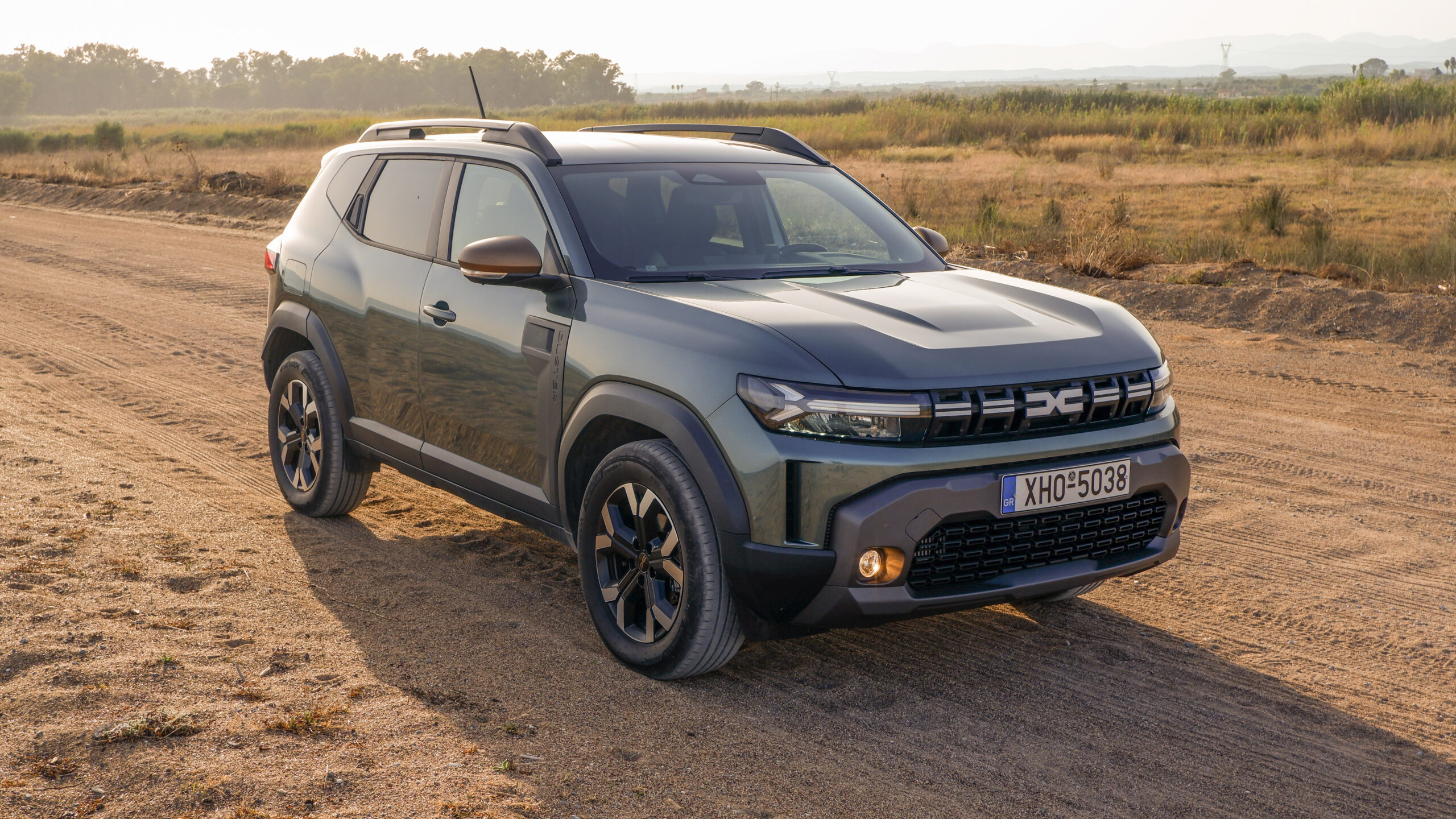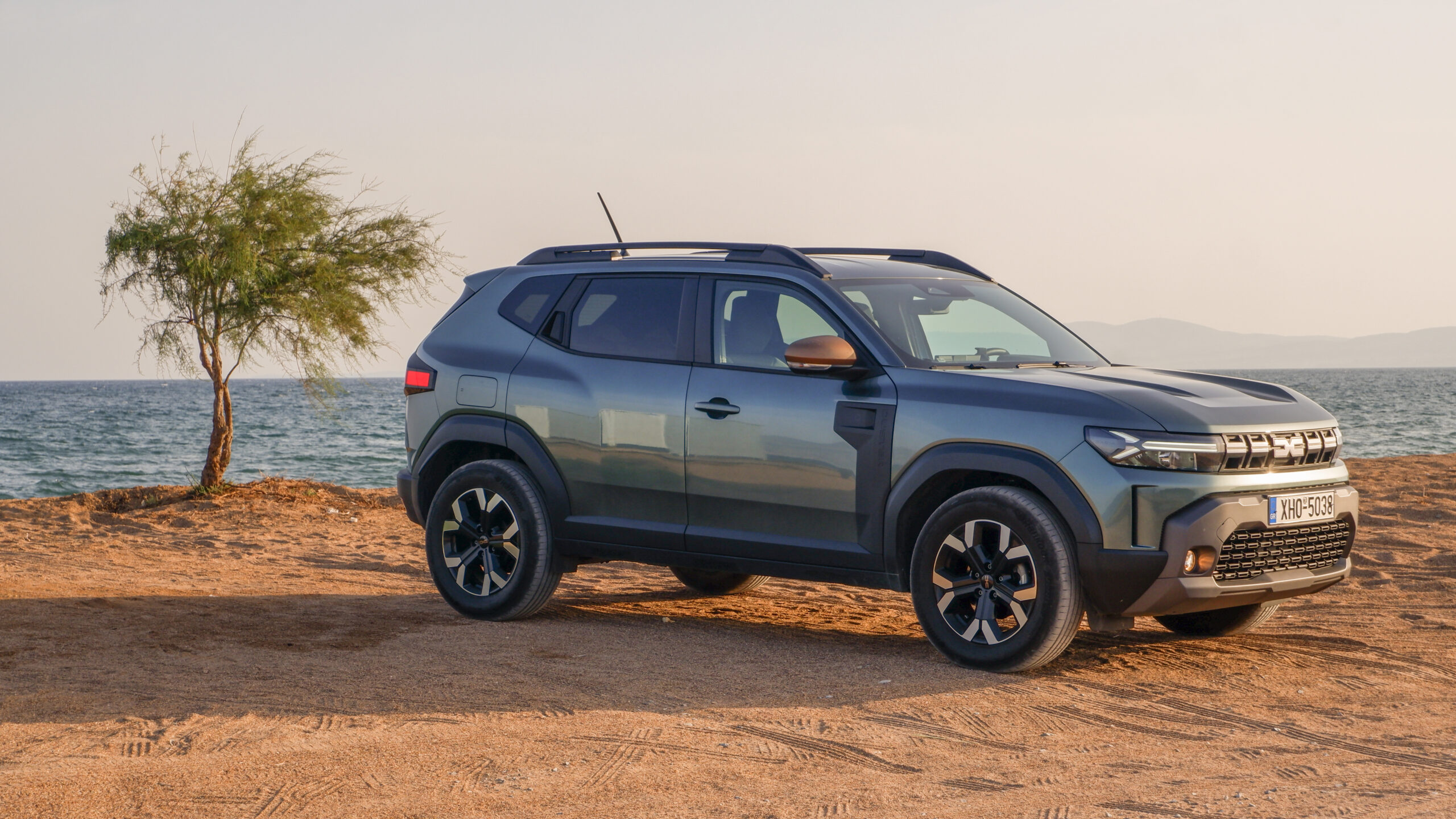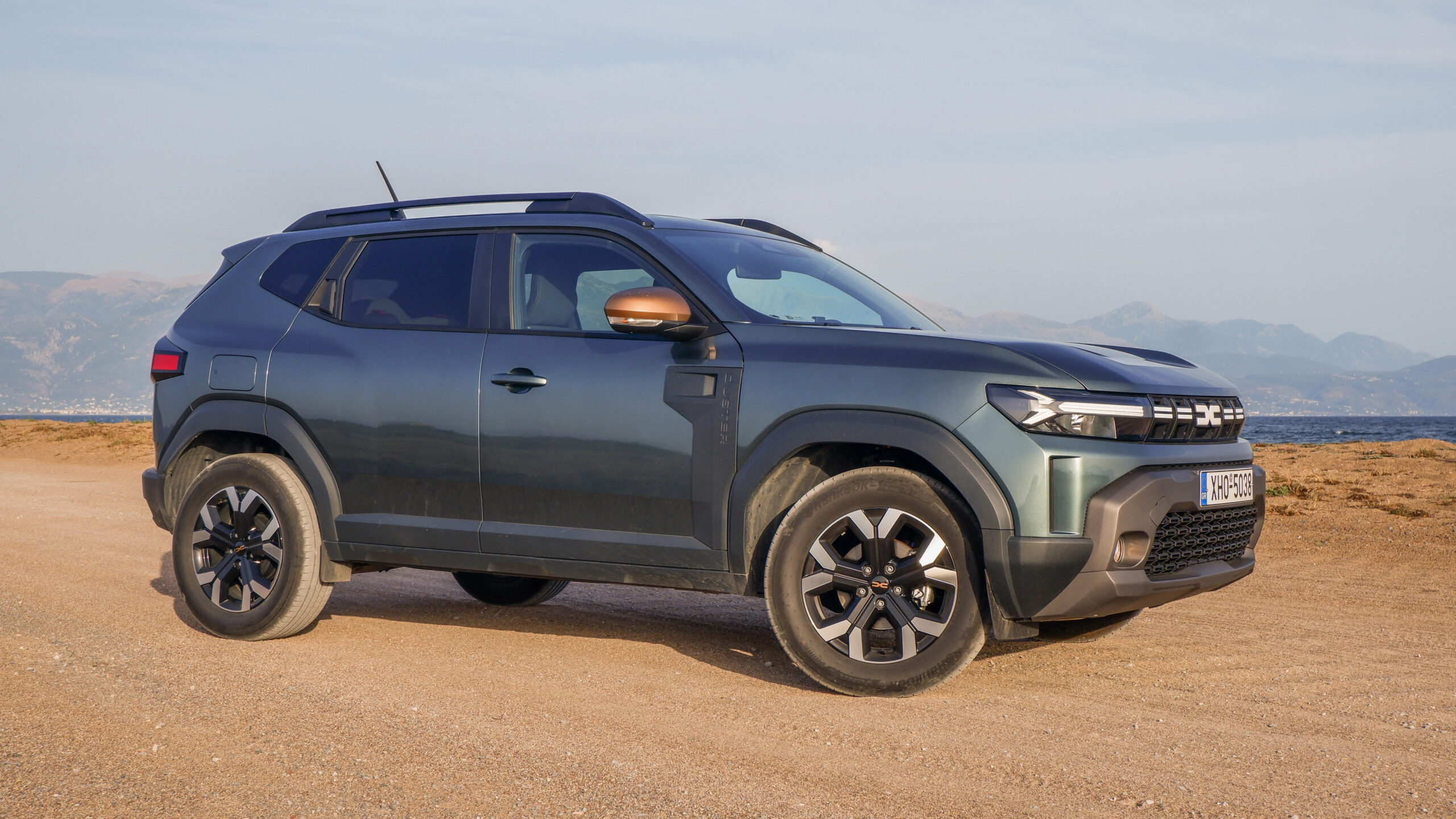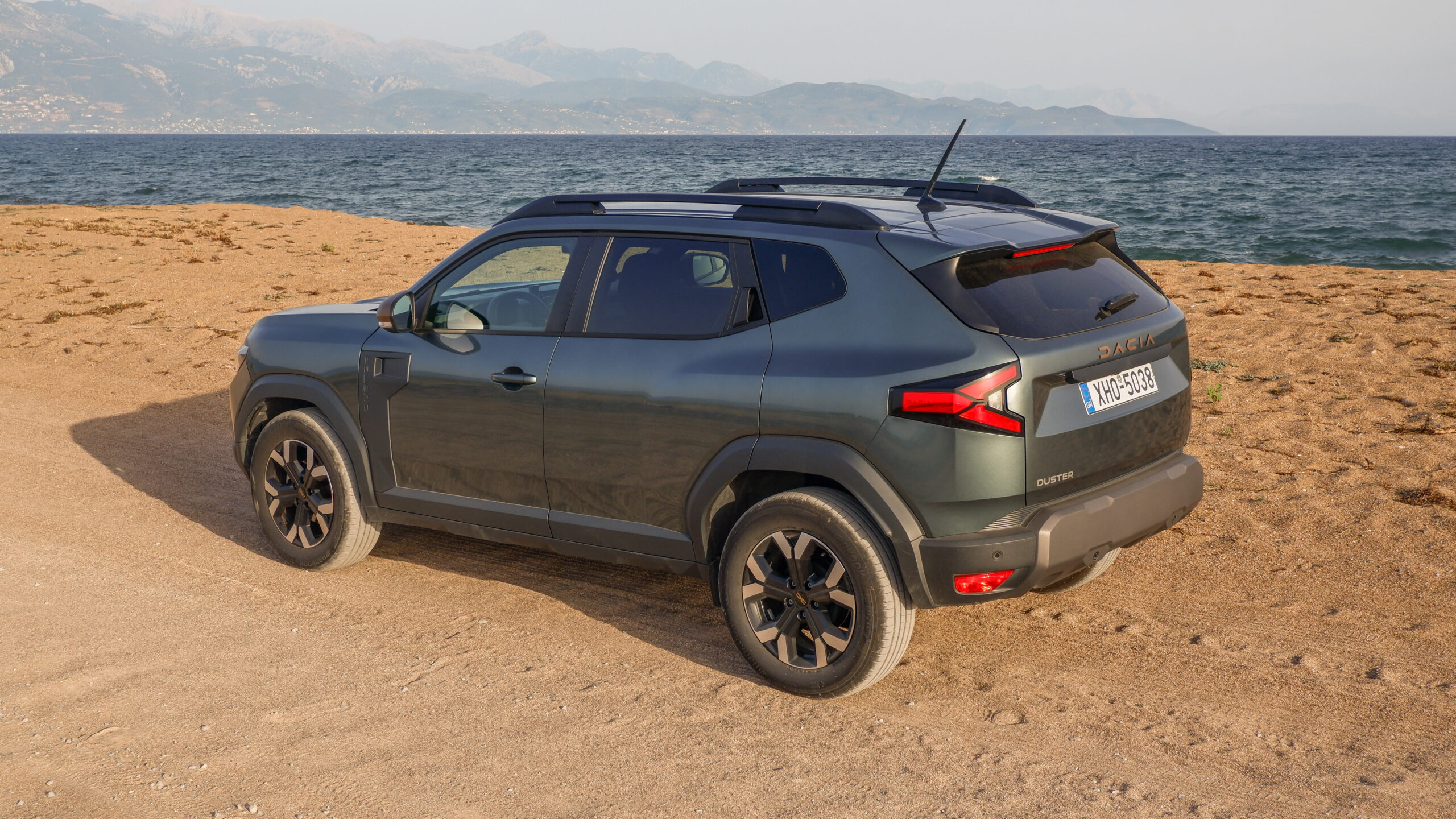- We’re driving the Dacia Duster with the entry-level 1.0-liter bi-fuel engine and FWD.
- The third generation of the small SUV combines rugged styling with a spacious cabin.
- It maintains the budget-friendly nature of its predecessor, with a sub-€20k starting price.
The Dacia Duster reigns supreme in Europe’s budget-friendly small SUV market, racking up 2.4 million sales over 13 years. When the all-new third generation debuted earlier this year, we knew we had to get our hands on it. Thankfully, the folks over at Dacia Greece gave us the keys to the flagship Extreme trim of the small SUV with the base 1.0-liter bi-fuel engine.
In its latest form, the Duster continues to parade its rugged charm, sporting class-leading ground clearance of up to 217 mm (8.5 inches). The new styling embraces a boxier profile, featuring chiseled fenders, an abundance of (20% recycled) plastic cladding, and modern LEDs. Inside, it’s roomy and starts at under €20k ($22k), though you might notice a few trade-offs in material quality and safety features.
More: Converting The Dacia Jogger Into A Budget Four-Seater Limo
While the SUV’s lineup is shifting towards electrification with mild-hybrid and full-hybrid variants sending the diesels to the scrapyard, our press car is fitted with the ICE-only Eco-G engine. The turbocharged 1.0-liter three-cylinder unit generates 99 hp (74 kW / 100 PS) and is mated to a six-speed manual gearbox.
More importantly, the powertrain runs on gasoline and LPG, allowing a combined range of up to 1,300 km (808 miles) between refueling stops. Unfortunately, the ECO-G is only available with FWD, unlike the more powerful mild-hybrid TCe 130, which gives you the option of all-wheel drive.
As is the case with Dacia’s entire ICE-powered lineup, the new Duster now rides on the modern CMF-B architecture, ditching the old B0 underpinnings that dated back to the early ’00s. Besides the Sandero and Jogger stablemates, this platform is shared with small hatchbacks and SUVs from the Renault Nissan Mitsubishi Alliance, including the Renault Captur, Symbioz, Mitsubishi ASX, and Nissan Juke.
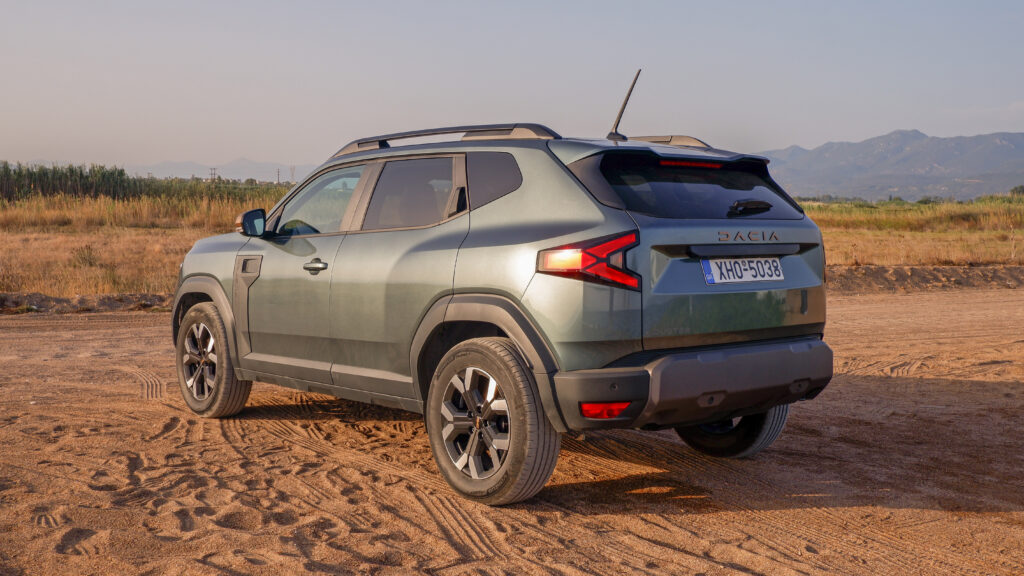
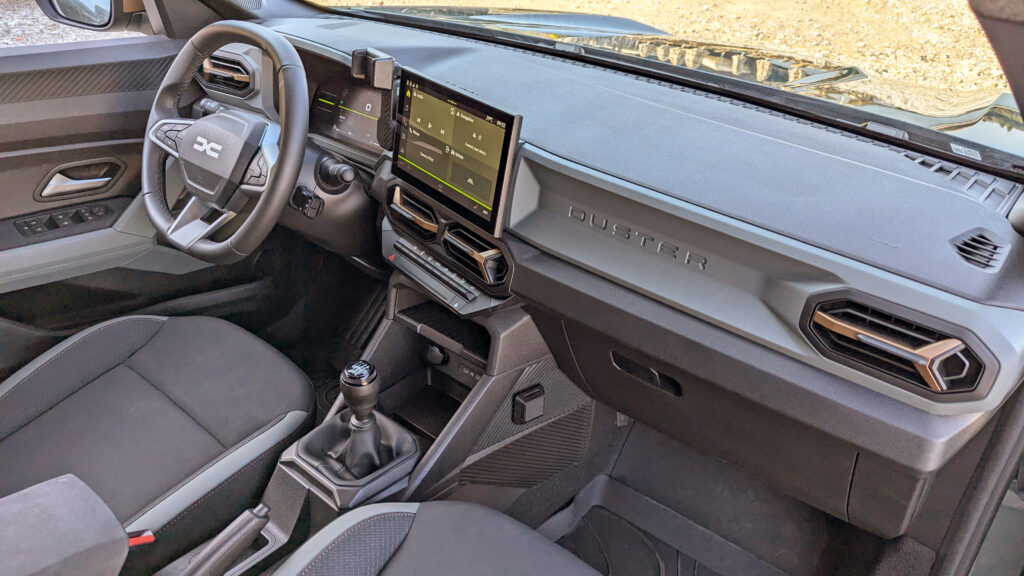
The new Duster stretches to 4,343 mm (171 inches), placing it toward the upper end of the B-SUV segment, or sub-compact in North American lingo. It’s grown 23 mm (0.9 inch) over its predecessor, though it’s still 204 mm (8 inches) shorter than the Jogger crossover.
Dacia will soon unveil the Bigster, an extended version of the Duster that will stretch to around 4.6 m (181 inches) and offer a third row of seats. Until then, the five-seater Duster provides 30 mm (1.2 inches) more rear legroom compared to its predecessor and features a spacious boot with a capacity of 472 liters (16.7 cubic feet).
Over the next few days we’ll be testing the Dacia Duster on the highway, in urban environments, and take it in light off-roading adventures, in order to see how much it has evolved compared to its popular predecessors. Feel free to write us any questions you might have for the Romanian SUV with the French heart, and we’ll do our best to answer them.




